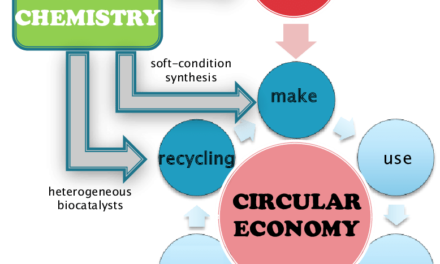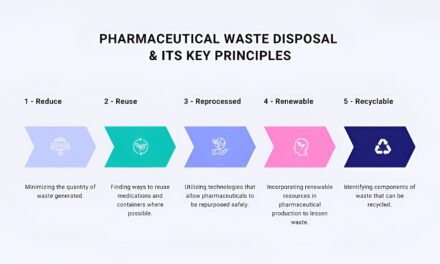Bio-based chemicals differ significantly from traditional (petrochemical-based) chemicals in terms of their origin, production processes, environmental impact, and applications. Here’s a detailed comparison highlighting the key differences:
1. Source of Raw Materials
- Bio-Based Chemicals:
- Derived from renewable biological sources such as plants, algae, microorganisms, and agricultural waste.
- Examples:
- Bio-ethanol from sugarcane or corn.
- Lactic acid from fermented carbohydrates.
- Traditional Chemicals:
- Derived from non-renewable fossil fuels like crude oil, natural gas, or coal.
- Examples:
- Ethylene from petroleum cracking.
- Benzene and toluene from crude oil distillation.
2. Production Processes
- Bio-Based Chemicals:
- Often produced using biochemical processes such as fermentation, enzymatic reactions, and bio-catalysis.
- Requires integration with agricultural supply chains.
- Traditional Chemicals:
- Typically produced through thermochemical processes, including cracking, distillation, and chemical synthesis, which rely on high temperatures and pressures.
- Depend on fossil fuel refining and extraction processes.
3. Environmental Impact
- Bio-Based Chemicals:
- Lower Carbon Footprint:
- CO₂ emissions are reduced because plants absorb CO₂ during growth, creating a near-neutral carbon cycle.
- Biodegradability:
- Many bio-based chemicals are biodegradable, reducing long-term environmental persistence.
- Sustainable Resource Use:
- Renewable feedstocks reduce reliance on finite fossil resources.
- Lower Carbon Footprint:
- Traditional Chemicals:
- High Carbon Footprint:
- Production and use release significant greenhouse gases.
- Environmental Risks:
- Non-biodegradable chemicals contribute to pollution.
- Extraction and refining of fossil fuels can lead to habitat destruction and spills.
- High Carbon Footprint:
4. Economic and Geopolitical Factors
- Bio-Based Chemicals:
- Decentralized Production:
- Production can occur near agricultural areas, reducing dependency on global fossil fuel markets.
- Price Volatility:
- Dependent on crop yields, weather conditions, and agricultural policies.
- Decentralized Production:
- Traditional Chemicals:
- Global Fossil Fuel Markets:
- Prices are influenced by geopolitical tensions, supply chain disruptions, and global demand for oil and gas.
- Centralized Production:
- Produced in regions with abundant fossil fuel resources, leading to supply vulnerabilities.
- Global Fossil Fuel Markets:
5. Energy Efficiency
- Bio-Based Chemicals:
- Production processes can be more energy-efficient at moderate conditions (e.g., fermentation at room temperature).
- May require pre-treatment of biomass, which adds to energy use.
- Traditional Chemicals:
- Processes often require high energy inputs for cracking and refining at elevated temperatures and pressures.
6. Performance and Applications
- Bio-Based Chemicals:
- Comparable or Enhanced Performance:
- Many bio-based chemicals match or exceed the performance of traditional counterparts.
- Examples:
- Bio-based polyethylene (from bio-ethanol) is chemically identical to petrochemical polyethylene.
- Specialized Applications:
- Biodegradability and non-toxicity make them ideal for eco-friendly packaging, personal care, and medical applications.
- Comparable or Enhanced Performance:
- Traditional Chemicals:
- Established across a broader range of applications due to long-term industrial optimization.
- Often non-biodegradable, making them more durable for long-term applications.
7. Market Adoption and Challenges
- Bio-Based Chemicals:
- Emerging Market:
- Adoption is skyrocketing in response to sustainability goals and consumer demand for eco-friendly products.
- Challenges:
- Higher production costs.
- Need for large-scale infrastructure for agricultural feedstock supply.
- Emerging Market:
- Traditional Chemicals:
- Mature Market:
- Widely adopted with established supply chains and economies of scale.
- Challenges:
- Increasing regulatory restrictions and declining public perception due to environmental concerns.
- Mature Market:
8. Regulatory and Social Acceptance
- Bio-Based Chemicals:
- Strong support from sustainability-focused regulations and certifications.
- Increasing consumer preference for products labeled as bio-based, natural, or eco-friendly.
- Traditional Chemicals:
- Facing stricter regulations to limit emissions and reduce environmental impact.
- Growing scrutiny from environmental advocacy groups.
9. Examples of Bio-Based and Traditional Chemicals
- Bio-Based Chemicals:
- Bio-Ethanol: From sugarcane, used as a renewable fuel additive.
- Lactic Acid: From corn starch, used in biodegradable plastics.
- Farnesene: From sugarcane, used in cosmetics and lubricants.
- Traditional Chemicals:
- Petroleum-Based Ethanol: From ethylene, used in solvents and fuels.
- Polyethylene: From crude oil, used in packaging and consumer goods.
- Paraffin: From petroleum, used in candles and wax products.
10. Future Trends
- Bio-Based Chemicals:
- Expansion into bioplastics, bio-lubricants, and bio-surfactants.
- Integration with circular economy models for upcycled feedstocks.
- Traditional Chemicals:
- Shift toward low-carbon production methods, such as carbon capture and utilization (CCU).
- Hybrid solutions combining bio-based and fossil feedstocks.
Conclusion
Bio-based chemicals differ fundamentally from traditional chemicals in their origins, production processes, and environmental impact. While traditional chemicals rely on non-renewable fossil fuels and established supply chains, bio-based chemicals offer a sustainable alternative aligned with the principles of green chemistry. Despite challenges like cost and scalability, the growing emphasis on sustainability and regulatory support is driving the transition toward bio-based chemicals across industries.
Hashtags
#BioBasedChemicals #SustainableChemicals #BioChemistry #GreenChemicals #RenewableChemicals #EcoFriendlyAlternatives #BioVsTraditionalChemicals #RenewableVsFossilBased #SustainableVsConventional #GreenVsConventionalChemicals #BioBasedSustainability #LowCarbonChemicals #ClimateSmartChemicals #EcoFriendlyChemistry #BioChemicalsForGood #NextGenChemicals #BiotechInChemicals #InnovativeBioChemicals #SustainableInnovation #CleanTechChemicals #BioChemicalsMarket #GrowingBioChemicals #FutureOfChemicals

















